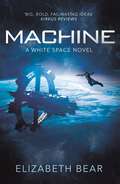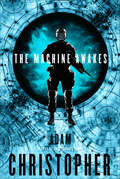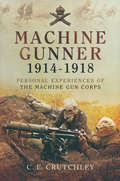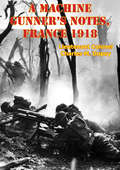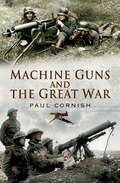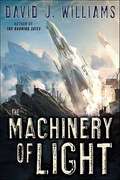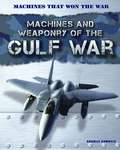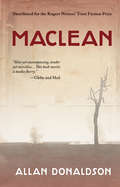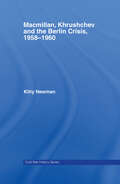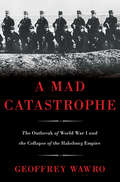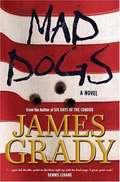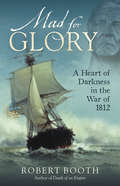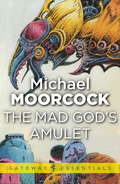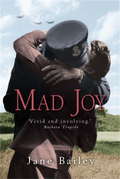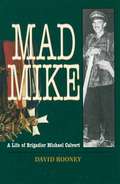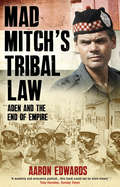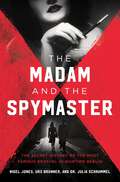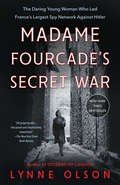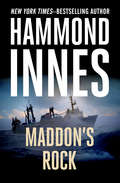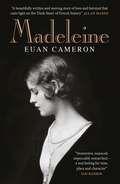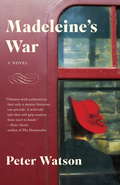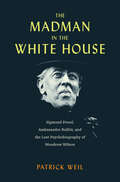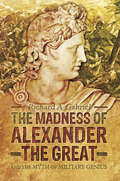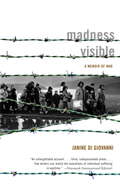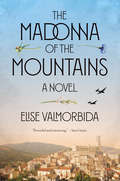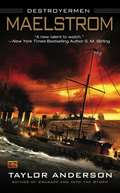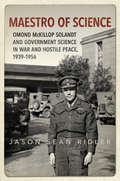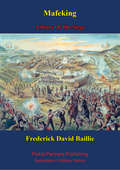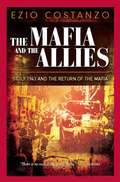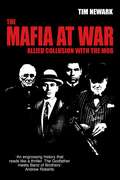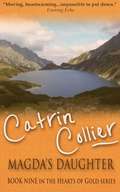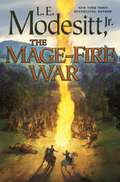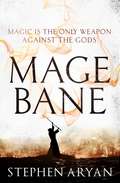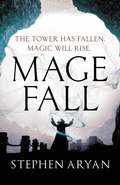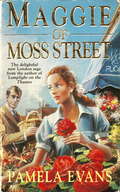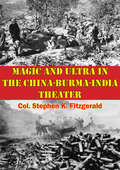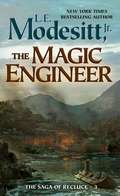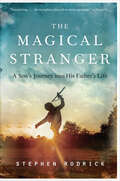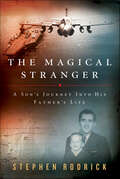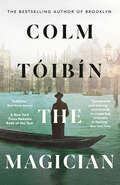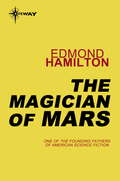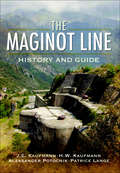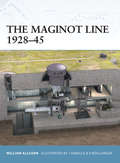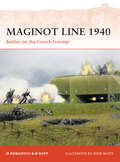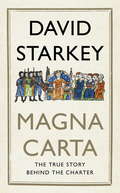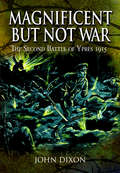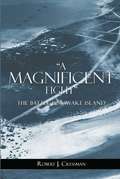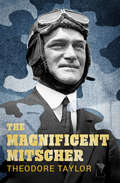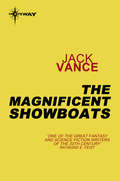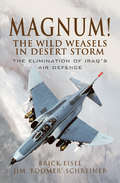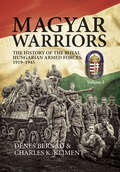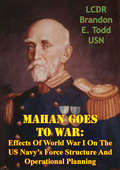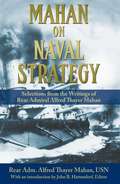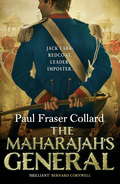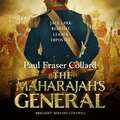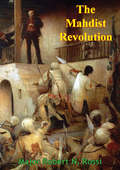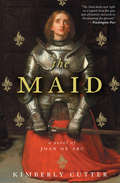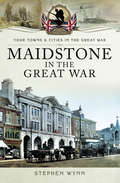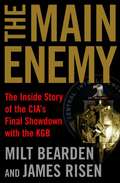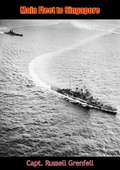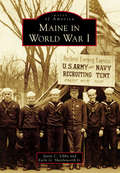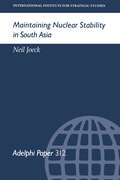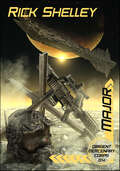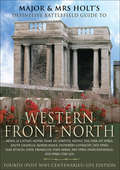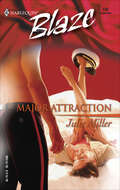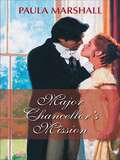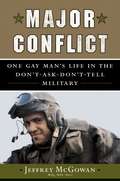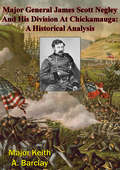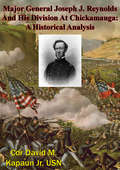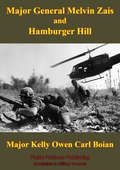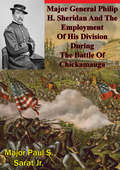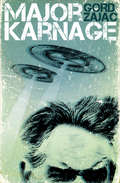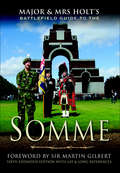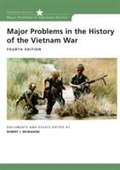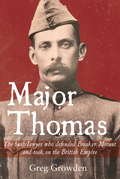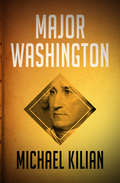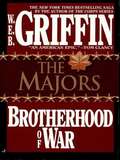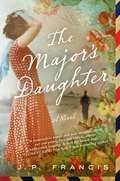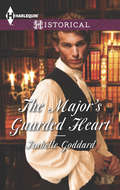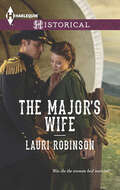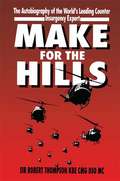- Table View
- List View
Machine: A White Space Novel
by Elizabeth BearMeet Doctor Jens.She hasn't had a decent cup of coffee in fifteen years. The first part of her job involves jumping out of perfectly good space-ships. The second part requires developing emergency treatments for sick aliens of species she's never seen before. She loves it.But her latest emergency is also proving a mystery: Two ships, one ancient and one new, locked in a dangerous embrace. A mysterious crew suffering from an even more mysterious ailment. A shipmind trapped in an inadequate body, much of her memory pared away. A murderous virus from out of time.Unfortunately, Dr. Jens can't resist a mystery. Which is why she's about to discover that everything she's dedicated her life to . . . is a lie.Praise for Elizabeth Bear'Like the best of speculative fiction, Bear has created a fascinating and complete universethat blends high-tech gadgetry with Old World adventure and political collusion' Publishers Weekly 'This is certainly the best science fiction novel I've read in 2019 so far and I look forward to see how Bear develops the characters and her impressively rich universe' (POPULAR SCIENCE)'Elizabeth Bear is just as comfortable writing steampunk and fantasy as she is hard science fiction, and Ancestral Night, first half of a duology, brims with heady concepts and sleek far-future hardware. There is a mordant wit at work' (FINANCIAL TIMES)'Awesome, awe-inspiring space opera. Fittingly, it shifts from weighty themes to lighter humour with dexterity, grace and crackling dialogue' (Daily Mail)'Bear has constructed a fascinating, absorbing universe populated with compelling and intelligent characters who conform to neither clichés nor stereotypes. It's sci-fi of the top order' (popmatters.com)
The Machine Awakes (Spider War #2)
by Adam ChristopherAdam Christopher's The Machine Awakes is a far future space opera set in the Spider War universe of Burning Dark. In the decades since the human race first made contact with the Spiders—a machine race capable of tearing planets apart—the two groups have fought over interstellar territory. But the war has not been going well for humankind, and with the failure of the Fleet Admiral's secret plan in the Shadow system, the commander is overthrown by a group of hardliners determined to get the war back on track.When the deposed Fleet Admiral is assassinated, Special Agent Von Kodiak suspects the new guard is eliminating the old. But when the Admiral's replacement is likewise murdered, all bets are off as Kodiak discovers the prime suspect is one of the Fleet's own, a psi-marine and decorated hero—a hero killed in action, months ago, at the same time his twin sister vanished from the Fleet Academy, where she was training to join her brother on the front.As Kodiak investigates, he uncovers a conspiracy that stretches from the slums of Salt City to the floating gas mines of Jupiter. There, deep in the roiling clouds of the planet, the Jovian Mining Corporation is hiding something, a secret that will tear the Fleet apart and that the Morning Star, a group of militarized pilgrims searching for their lost god, is determined to uncover.But there is something else hiding in Jovian system. Something insidious and intelligent, machine-like and hungry.The Spiders are near.At the Publisher's request, this title is being sold without Digital Rights Management Software (DRM) applied.
Machine Gunner, 1914–18: Personal Experiences of the Machine Gun Corps
by C. E. CrutchleyIn 1914 there were only two machine guns supporting a British infantry battalion of 800 men, and in the light of the effectiveness of German and French machine guns the Machine Gun Corps was formed in October 1915. This remarkable book, compiled and edited by C E Crutchley, is a collection of the personal accounts of officers and men who served in the front lines with their machine guns in one of the most ghastly wars, spread over three continents. The strength of the book lies in the fact that these are the actual words of the soldiers themselves, complete with characteristic modes of expression and oddities of emphasis and spelling. All theatres of war are covered from the defence of the Suez Canal, Gallipoli and Mesopotamia in the east to France and Flanders, the German offensive of March 1918 and the final act on the Western Front that brought the war to an end. October 2006 is the 90th anniversary of the formation of the Machine Gun Corps.
The Machine Gunners
by Robert WestallWith Nazi planes raining bombs on England night after night, every boy in Garmouth has a collection of shrapnel, bullet casings, and other war souvenirs. But nothing comes close to the working machine gun Chas McGill pulls out of a downed bomber. Soon Chas realizes that he's found more than just a souvenir. While police search frantically for the missing gun, Chas and his friends build a secret fortress to fight the Germans themselves.
Machine Gunner’s Notes, France 1918 [Illustrated Edition]
by Lieutenant Colonel Charles M. DupuyIncludes The Americans in the First World War Illustration Pack - 57 photos/illustrations and 10 mapsWhen the United States entered the First World War in 1917 the size of the army was tiny in comparison to the European Powers. The long-serving officers of the U.S. army faced the daunting task of licking the new recruits of 1917 into shape for service overseas. Among these officers was Charles Dupuy who was charged with getting his men ready for battle utilising the weapon that had inflicted so much damage during the previous three years - the machine gun. Key to offence or defence, the machine gun companies of the U.S. expeditionary force had to be fast and deadly in the offence and staunch and steadfast in defence. Major Dupuy tells of how he whipped his men into shape and led them to hard fought victory against the Germans on the Western front in 1918.
Machine-Guns and the Great War
by Paul CornishAn in-depth study of how these direct fire weapons were actually employed on the battlefields and their true place in the armory of World War I. The machine-gun is one of the iconic weapons of the Great War—indeed of the twentieth century. Yet it is also one of the most misunderstood. During a four-year war that generated unprecedented casualties, the machine-gun stood out as a key weapon. In the process it took on an almost legendary status that persists to the present day. It shaped the tactics of the trenches, while simultaneously evolving in response to the tactical imperatives thrown up by this new form of warfare. Paul Cornish, in this authoritative and carefully considered study, reconsiders the history of automatic firepower, and he describes in vivid detail its development during the First World War and the far-reaching consequences thereof. He dispels many myths and misconceptions that have grown up around automatic firearms, but also explores their potency as symbols and icons. His clear-sighted reassessment of the phenomenon of the machine-gun will be fascinating reading for students of military history and of the Great War in particular.&“For those wanting a little more in-depth information about the role and development of machine guns during the war, this book offers an excellent, well written and easily accessible account of what became the iconic weapon of the war, mainly due to the massive casualties it was able to inflict . . . This really is well worth reading.&” —Great War Magazine
The Machinery of Light (Autumn Rain #3)
by David J. WilliamsWith The Machinery of Light, David J. Williams completes his furiously paced, stunningly imagined trilogy--a work of vision, beauty, and pulse-pounding futuristic action. September 26, 2110. 10:22 GMT. Following the assassination of the American president, the generals who have seized power initiate World War Three, launching a surprise attack against the Eurasian Coalition's forces throughout the Earth-Moon system. Across the orbits, tens of thousands of particle beams and lasers blast away at one another. The goal: crush the other side's weaponry, paving the way for nuclear bombardment of the cities. As inferno becomes Armageddon, the rogue commando unit Autumn Rain embarks on one last run. Matthew Sinclair, an imprisoned spymaster, plots his escape. And his former protege Claire Haskell, capable of hacking into both nets and minds, is realizing that all her powers may merely be playing into Sinclair's plans. For even as Claire evades the soldiers of East and West amid carnage in the lunar tunnels, the surviving members of the Rain converge upon the Moon, one step ahead of the Eurasian fleets but one step behind the mastermind who created Autumn Rain--and his terrible final secret.
Machines and Weaponry of the Gulf War (Machines that Won the War)
by Charlie SamuelsOne of the most successful military campaigns in American history was won with heavy firepower and high-tech weaponry. Readers explore the world of military machines and the science behind the United States battles in the Persian Gulf. Firsthand accounts from soldiers who developed and operated these weapons will help readers understand how the development and application of technology can mean the difference between winning and losing the biggest battles in history.
Mackenzie's Heroes
by Linda HowardMackenzie's PleasureNavy SEAL Zane Mackenzie was a pro. No mission had ever gotten the better of him--until now. Saving the ambassador's gorgeous daughter, Barrie Lovejoy, had been textbook--except for their desperate night of passion. And though his job as a soldier had ended with her freedom, his duties as a husband had only just begun. For he would sooner die than let the enemy harm the mother of his child.Mackenzie's MagicTalented trainer Maris Mackenzie was wanted for horse theft, but with no memory of that fateful day, she had little chance of proving her innocence or eluding the villains behind the prize stallion's disappearance. Her only hope for salvation? The stranger in her bed.
Maclean
by Allan DonaldsonIn this novel set over the course of a day, an alcoholic, Canadian, World War I veteran attempts to find peace while shopping for a birthday present.Twenty-five years after the Great War, John Maclean is still struggling to carve out a meaningful existence in his small New Brunswick hometown.One late summer day he embarks on a seemingly prosaic search for a little money, a little booze, and a birthday gift for his mother. But he’s haunted by memories—of war, of his cruel father, of opportunities wasted and lost—and each moment is shadowed by his bleak history. Shell-shocked and alcoholic, Maclean is divided between a lonely present and a violent past.With clean and evocative prose, author Allan Donaldson exquisitely depicts a shattered war veteran’s search for peace. Praise for Maclean“Slim yet encompassing, tender yet merciless . . . This book merits a media flurry.” —Globe and Mail (Canada)
Macmillan, Khrushchev and the Berlin Crisis, 1958-1960 (Cold War History)
by Kitty NewmanThis new study casts fresh light on the roles of Harold Macmillan and Nikita Khrushchev and their efforts to achieve a compromise settlement on the pivotal Berlin Crisis. Drawing on previously unseen documents and secret archive material, Kitty Newman demonstrates how the British Prime Minister acted to prevent the crisis sliding into a disastrous nuclear conflict. She shows how his visit to Moscow in 1959 was a success, which convinced Khrushchev of a sincere effort to achieve a lasting settlement. Despite the initial reluctance of the French and the Americans, and the consistent opposition of the Germans, Macmillan’s subsequent efforts led to a softening of the Western line on Berlin and to the formulation of a set of proposals that might have achieved a peaceful resolution to the crisis if the Paris Conference of 1960 had not collapsed in acrimony. This volume also assesses Khrushchev’s role, which despite his sometimes intemperate language, was to secure a peaceful settlement which would stabilize the East German regime, maintain the status quo in Europe and prevent the reunification of a resurgent, nuclearized Germany, thereby paving the way for disarmament. This book will be of great interest to all students of post-war diplomacy, Soviet foreign policy, the Cold War and of international relations and strategic studies in general.
A Mad Catastrophe: The Outbreak of World War I and the Collapse of the Habsburg Empire
by Geoffrey WawroA prizewinning military historian explores a critical but overlooked cause for World War I: the staggering decrepitude of the Austro-Hungarian Empire.
Mad Dogs
by James GradyFive deranged CIA killers, all of them dependent on their meds and deep in the woods of Maine, are forced to break out of the asylum when someone murders their psychiatrist ---and frames them for the deed. Crazy and traumatized by their experiences in the CIA, they operate under somewhat skewed perceptions of the real world. Their training, however, has prepared them to survive in an unfriendly world---even if that world is the Boston-to-Washington corridor as they chase down the real killer. Suspenseful, fast, and edgy, as well as funny and humane, Mad Dogs is a stunning novel of political commentary and a tour-de-force of contemporary literary style, a look at twenty-first-century spy wars.
Mad For Glory: A Heart of Darkness in the War of 1812
by Robert BoothWhat if a naval captain went rogue with an American battleship? In October, 1812, as the 32-gun U.S. frigate Essex ventured out against the British enemy, only one man had any idea that this cruise would turn into the longest, strangest naval adventure in American history. That man was Captain David Porter, who had decided to run off with the navy's ship and its three hundred men to fight a separate Pacific war--one of privateering, pillaging, and orgies. Drawing on Porter's own writings and the accounts of eyewitnesses, the author memorably recounts the events of a dark and fatal voyage in which David Porter crosses the line from commander to cult-leader, from improbable fantasy to disastrous reality. In a tale so amazing that it reads like fiction, Porter, impelled by his own demons and by rivalry with the ghostly British buccaneer Lord Anson, took his men and boys on a seventeen-month mystery tour that did not end until he had disrupted the Chilean revolution, captured the entire English whaling fleet (manned mainly by Americans), vanished into the enchanted Galapagos, and re-emerged in Polynesia, where he made himself the conqueror-chief of the stone-age Nukuhivans. In the end, when he sought redemption with a glorious victory over a British opponent, he failed terribly and sacrificed the lives of one-third of his crew to his personal notions of heroism. Robert Booth tells the story of the ill-fated Essex with accuracy, immediacy, and a broad vision of its meanings as an epic of war, a gripping tale of the sea, a brilliant portrait of a disturbed and disturbing American hero, and a geo-political thriller that sheds new light on the origins of U.S. imperialism, the tragedy of missed opportunities, and the disastrous and permanent impact of Porter's rampage on the peoples of the Pacific.
The Mad God's Amulet: The Mad God's Amulet (Gateway Essentials #447)
by Michael MoorcockAfter withstanding the power of the Black Jewel and saving the city of Hamadan from the conquest of the Dark Empire of Granbretan, Hawkmoon set off for the Kamarg, where friendship and love await him. But the journey is beyond treacherous. With his boon companion, Oladahn, the beastman of the Bulgar Mountains, Hawkmoon discovers the peaceful city of Soryandum, which holds the power to transcend the confines of time and space. This power, which keeps the city from falling to the Dark Empire, could keep the Kamarg safe. But alas his love Yisselda is now a prisoner of the Mad God, whose powerful amulet is linked to Hawkmoon's ultimate destiny: a power that began at creation and calls heroes to arms throughout existence. Hawkmoon must rip this amulet from the neck of the Mad God if he hopes to save the Kamarg and free his friends and his one true love from the Dark Empire's relentless wrath.
Mad Joy
by Jane BaileyA heart-warming and passionate tale from the author of Tommy Glover's Sketch of HeavenAt the age of five I ran into a wood, and nearly two years later I walked out of it and into the nearest house.In 1927, Gracie returns to her house to find a young girl curled up on her armchair: a feral, rather grubby gift of fate. With no knowledge of the child's origins and no children of her own, Gracie adopts her and names her 'Joy'. Despite the endless speculation about Joy's unusual ways, Gracie is happy to remain ignorant about her past in case anyone should come forward to reclaim her as their own. Time passes and Joy grows into a young woman at the advent of World War II. But when she becomes romantically involved with a fighter pilot the mystery of her past slowly unravels . . .Praise for Jane Bailey'A vivid and involving novel that reaches a truly page-turning climax' Barbara Trepido'Absorbing, compelling and intensely moving' Lesley Glaister, author of As Far as You Can Go'A gentle, poignant, achingly funny tale of displaced children, first love and the tragic secrets hidden behind so many respectable facades' Serena Mackesy, author of The Temp
Mad Mike: A Life of Brigadier Michael Calvert
by David RooneyThis penetrating biography tells the story of his life including his exploits in Norway and the early Commandos. It also uncovers new evidence revealing that his court martial was unjust.
Mad Mitch's Tribal Law: Aden and the End of Empire
by Aaron EdwardsAden, 20 June 1967: two army Land Rovers burn ferociously in the midday sun. The bodies of British soldiers litter the road. Thick black smoke bellows above Crater town, home to insurgents who are fighting the British-backed Federation government. Crater had come to symbolise Arab nationalist defiance in the face of the world’s most powerful empire. Hovering 2,000 ft. above the smouldering destruction, a tiny Scout helicopter surveys the scene. Its passenger is the recently arrived Commanding Officer of the Argyll and Sutherland Highlanders, Lieutenant-Colonel Colin Mitchell. Soon the world’s media would christen him ‘Mad Mitch’, in recognition of his controversial reoccupation of Crater two weeks later.Mad Mitch was truly a man out of his time. Supremely self-confident and debonair, he was an empire builder, not dismantler, and railed against the national malaise he felt had gripped Britain’s political establishment. Drawing on a wide array of never-before-seen archival sources and eyewitness testimonies, Mad Mitch’s Tribal Law tells the remarkable story of inspiring leadership, loyalty and betrayal in the final days of British Empire. It is, above all, a shocking account of Britain’s forgotten war on terror.
The Madam and the Spymaster: The Secret History of the Most Famous Brothel in Wartime Berlin
by Urs Brunner Nigel Jones Dr. Julia SchrammelThis extraordinary story of a high-class Berlin brothel—taken over by the Nazi secret service—is one of the last untold tales of World War II. There is no book in English about the wartime Berlin &‘salon&’ run by Kitty Schmidt under the secret control of Reinhard Heydrich, one of the architects of the Final Solution. "Salon Kitty" was the most notorious brothel in the decadent Berlin of the Weimar Republic - the city of "Cabaret." But after the Nazis took power, it became something more dangerous: a spying center with every room wired for sound, staffed by female agents specially selected by the SS to coax secrets from their VIP clients. Masterminded by Reinhard Heydrich, the spymaster whom Hitler himself called "the man with the iron heart," the exclusive establishment turned listening post was patronized by the Nazi leaders themselves, not knowing that hidden ears were listening. The Madam and the Spymaster reveals the sensational true story of this forgotten part of espionage history. The deep research undertaken by Nigel Jones, Urs Brunner and Dr Julia Schrammel sheds new light on Nazi methods of control and coercion, and the way sex was abused for their own perverse purposes.
Madame Fourcade's Secret War: The Daring Young Woman Who Led France's Largest Spy Network Against Hitler
by Lynne OlsonThe little-known true story of Marie-Madeleine Fourcade, the woman who headed the largest spy network in occupied France during World War II, from the bestselling author of Citizens of London and Last Hope Island <P><P> In 1941 a thirty-one-year-old Frenchwoman, a young mother born to privilege and known for her beauty and glamour, became the leader of a vast intelligence organization—the only woman to serve as a chef de résistance during the war. <P><P>Strong-willed, independent, and a lifelong rebel against her country’s conservative, patriarchal society, Marie-Madeleine Fourcade was temperamentally made for the job. Her group’s name was Alliance, but the Gestapo dubbed it Noah’s Ark because its agents used the names of animals as their aliases. The name Marie-Madeleine chose for herself was Hedgehog: a tough little animal, unthreatening in appearance, that, as a colleague of hers put it, “even a lion would hesitate to bite.” <P><P>No other French spy network lasted as long or supplied as much crucial intelligence—including providing American and British military commanders with a 55-foot-long map of the beaches and roads on which the Allies would land on D-Day—as Alliance. <P><P>The Gestapo pursued them relentlessly, capturing, torturing, and executing hundreds of its three thousand agents, including Fourcade’s own lover and many of her key spies. <P><P>Although Fourcade, the mother of two young children, moved her headquarters every few weeks, constantly changing her hair color, clothing, and identity, she was captured twice by the Nazis. <P><P>Both times she managed to escape—once by slipping naked through the bars of her jail cell—and continued to hold her network together even as it repeatedly threatened to crumble around her. <P><P>Now, in this dramatic account of the war that split France in two and forced its people to live side by side with their hated German occupiers, Lynne Olson tells the fascinating story of a woman who stood up for her nation, her fellow citizens, and herself. <P><b>A New York Times Bestseller</b>
Madame Prosecutor: Confrontations with Humanity's Worst Criminals and the Culture of Impunity
by Carla Del Ponte Chuck SudeticDel Ponte won international recognition as Switzerland's attorney general when she pursued cases against the Sicilian Mafia. In 1999, she become the chief prosecutor of the International Criminal Tribunal. She offers this courageous and startling memoir of her eight years spent striving to serve justice.
Maddon's Rock: The Golden Soak, Maddon's Rock, And The Doomed Oasis
by Hammond InnesThe chilling story of desperate men on a doomed ship during World War II from "Great Britain's leading adventure novelist" (Financial Times). For three weeks, Cpl. James Landon Vardy has waited in Murmansk, a frozen northern port of the Soviet Union, hoping a ship will come to take him home. He's British, in Russia to help with the war effort, and as he shivers in the icy port, he dreams of spring in England. Finally, a miracle--a ship. But when Vardy boards the Trikkala, he has no idea he's stepping into hell. From the first day, Vardy senses the Trikkala is doomed. Her officers are drunk, her lifeboats are leaky, and the mysterious crates supposedly carrying machine parts actually contain a fortune in silver bullion. In the early hours of a frigid morning on the North Sea, Vardy realizes the ship is peeling away from its convoy into dangerous waters--a suicidal decision that takes the Trikkala directly into a minefield. The Trikkala might never reach port, but Vardy's adventure is just beginning. In the tradition of The Caine Mutiny and Mutiny on the Bounty, Maddon's Rock is a marvelously realistic story of corruption, crime, and justice on the high seas.
Madeleine
by Euan Cameron"Immersive, nuanced, impeccably researched" IAN RANKIN"Beautifully written and moving" ALLAN MASSIE"Poignant, nostalgic and redolent of the smell of France" SIMON BRETTFamily history has always been a mystery to Will Latymer. His father flatly refused to talk about it, and with no other relatives to consult, it seems that a mystery it shall always remain. Until of course, Will meets Ghislaine, his beautiful French cousin, in a chance encounter that introduces him to his grandmother, Madeleine, shut away in a quiet Breton manor with her memories and secrets.Before long, Will has been plunged headlong into the life of Madeleine's great love, his longlost grandfather, Henry Latymer. Reading Henry's old letters and diaries for the first time, Will discovers an idealistic young man, full of hopes and optimism - an optimism that will gradually be crushed as the realities of life under the Vichy regime become glaringly clear.But the more Will delves into Madeleine and Henry's past, and into France's troubled history, the darker the secrets he discovers become, and the more he has cause to wonder if sometimes, the past should remain buried.
Madeleine
by Euan Cameron"Immersive, nuanced, impeccably researched" IAN RANKIN"Beautifully written and moving" ALLAN MASSIE"Poignant, nostalgic and redolent of the smell of France" SIMON BRETTFamily history has always been a mystery to Will Latymer. His father flatly refused to talk about it, and with no other relatives to consult, it seems that a mystery it shall always remain. Until of course, Will meets Ghislaine, his beautiful French cousin, in a chance encounter that introduces him to his grandmother, Madeleine, shut away in a quiet Breton manor with her memories and secrets.Before long, Will has been plunged headlong into the life of Madeleine's great love, his longlost grandfather, Henry Latymer. Reading Henry's old letters and diaries for the first time, Will discovers an idealistic young man, full of hopes and optimism - an optimism that will gradually be crushed as the realities of life under the Vichy regime become glaringly clear.But the more Will delves into Madeleine and Henry's past, and into France's troubled history, the darker the secrets he discovers become, and the more he has cause to wonder if sometimes, the past should remain buried.
Madeleine's War
by Peter WatsonA compulsively readable blend of romance and drama based on actual events in Britain and France leading up to D-Day in 1944 Matthew Hammond is a British military officer posted to the European theater during World War II. He sustained a serious injury on the front lines, so bad, in fact, that it cost him a lung. Now he is back in England, unable to fight, but he continues to serve his country by training new resistance fighters. One of the recruits under his tutelage is Madeleine, a spellbinding, impassioned French-Canadian with eyes of "burnished whiskey." Despite protocols discouraging romance, they are deeply in love, and Matthew is torn about putting Madeleine's life in danger. He already has one tragic affair with a Resistance fighter under his belt--his former lover, Celestine, was killed because her assassination of a German doctor went awry. But the Allies are mustering all their resources for crucial beach landings in Normandy, and Matthew knows his unit will need to play a role. It will be a very dangerous mission: parachuting in behind the Nazi line. As Madeleine progresses through the training with her fellow recruits, Matthew can only hope that luck will guide her through when the drop finally arrives.
The Madman in the White House: Sigmund Freud, Ambassador Bullitt, and the Lost Psychobiography of Woodrow Wilson
by Patrick Weil“A rich study of the role of personal psychology in the shaping of the new global order after World War I. So long as so much political power is concentrated in one human mind, we are all at the mercy of the next madman in the White House.”—Gary J. Bass, author of The Blood TelegramThe notorious psychobiography of Woodrow Wilson, rediscovered nearly a century after it was written by Sigmund Freud and US diplomat William C. Bullitt, sheds new light on how the mental health of a controversial American president shaped world events.When the fate of millions rests on the decisions of a mentally compromised leader, what can one person do? Disillusioned by President Woodrow Wilson’s destructive and irrational handling of the 1919 Treaty of Versailles, a US diplomat named William C. Bullitt asked this very question. With the help of his friend Sigmund Freud, Bullitt set out to write a psychological analysis of the president. He gathered material from personal archives and interviewed members of Wilson’s inner circle. In The Madman in the White House, Patrick Weil resurrects this forgotten portrait of a troubled president.After two years of collaboration, Bullitt and Freud signed off on a manuscript in April 1932. But the book was not published until 1966, nearly thirty years after Freud’s death and only months before Bullitt’s. The published edition was heavily redacted, and by the time it was released, the mystique of psychoanalysis had waned in popular culture and Wilson’s legacy was unassailable. The psychological study was panned by critics, and Freud’s descendants denied his involvement in the project.For nearly a century, the mysterious, original Bullitt and Freud manuscript remained hidden from the public. Then in 2014, while browsing the archives of Yale University, Weil happened upon the text. Based on his reading of the 1932 manuscript, Weil examines the significance of Bullitt and Freud’s findings and offers a major reassessment of the notorious psychobiography. The result is a powerful warning about the influence a single unbalanced personality can have on the course of history.
The Madness of Alexander the Great: And the Myth of Military Genius
by Richard A. GabrielOver the years, some 20,000 books and articles have been written about Alexander the Great, the vast majority hailing him as possibly the greatest general that ever lived. Richard A. Gabriel, however, argues that, while Alexander was clearly a succesful soldier-adventurer, the evidence of real greatness is simply not there. The author presents Alexander as a misfit within his own warrior society, attempting to overcompensate. Thoroughly insecure and unstable, he was given to episodes of uncontrollable rage and committed brutal atrocities that would today have him vilified as a monstrous psychopath. The author believes some of his worst excesses may have been due to what we now call Post Traumatic Stress Disorder, of which he displays many of the classic symptoms, brought on by extended exposure to violence and danger. Above all the author thinks that Alexander's military ability has been flattered by History. Alexander was tactically competent but contributed nothing truly original, while his strategy was often flawed and distorted by his obsession with personal glory. This radical reappraisal is certain to provoke debate.
Madness Visible: A Memoir of War
by Janine Di GiovanniAward-winning journalist Janine di Giovanni spent much of the 1990s observing the cycles of violence and vengeance from inside Balkan cities and villages, refugee camps and makeshift hospitals. This was a conflict that raised challenging questions: what causes neighbours, whose families have lived peacefully for centuries, to turn with mindless brutality against one another? How do we measure the difference between bravery and cowardice in a conflict so morally ill-defined? What becomes of survivors when the fabric of an age-old community is destroyed? Searching for answers, di Giovanni brings the reality of war into focus: children dying from lack of medicine, women driven to despair and madness by their experiences in paramilitary rape camps and soldiers numbed by and inured to the atrocities they committed. In Madness Visible she paints an indelible portrait of the Balkans under siege and shows the true - human - cost of war.
The Madonna of the Mountains: A Novel
by Elise Valmorbida“A riveting adventure for the soul . . . just the kind of evocative historical fiction I love.”—Sara Gruen, author of At the Water’s Edge and Water for ElephantsAn epic, inspiring novel about one woman’s survival in the hardscrabble Italian countryside and her determination to protect her family throughout the Second World War—by any means possible Maria Vittoria is twenty-five when her father brings home the man who will become her husband. It is 1923 in the austere Italian mountain village where her family has lived for generations, and the man she sees is tall and handsome and has survived the First World War without any noticeable scars. Taking just the linens she has sewn that make up her dowry and a statue of the Madonna that sits by her bedside, Maria leaves the only life she has ever known to begin a family. But her future will not be what she imagines. The Madonna of the Mountains follows Maria over the next three decades, as she moves to the town where she and her husband become shopkeepers, through the birth of their five children, through the hardships and cruelties of the National Fascist Party Rule and the Second World War. Struggling with the cost of survival at a time when food is scarce and allegiances are questioned, Maria trusts no one and fears everyone—her Fascist cousin, the madwoman from her childhood, her watchful neighbors, the Nazis and the Partisans who show up hungry at her door. As Maria’s children grow up and her marriage endures its own hardships, she must hold her family together with resilience, love, and faith, until she makes a fateful decision that will change the course of all their lives. A sweeping saga about womanhood, loyalty, war, religion, family, food, motherhood, and marriage, The Madonna of the Mountains is a poignant look at the span of one woman’s life as the rules change and her world becomes unrecognizable. In depicting the great cost of war and the ineluctable power of time on a life, Elise Valmorbida has created an unforgettable portrait of a woman navigating both the unforeseen and the inevitable.Advance praise for Madonna of the Mountains“The moral and ethical questions raised propel the story beyond the particulars into the universal.”—Kirkus Reviews“It is a bewitching but entirely unsentimental portrait of one woman’s attempt to keep her family safe in turbulent times.”—The Times (UK), Book of the Month“A solid choice for readers who appreciate layered family sagas.”—Library Journal
Maelstrom (Destroyermen, Book #3)
by Taylor AndersonTHE STORM BREAKS. After being swept from the World War II Pacific into an alternate world, Lieutenant Commander Matthew Patrick Reddy and the crew of USS Walker have allied with the peaceful Lemurians in their struggle against the warlike reptilian Grik, but they are already outgunned and outmanned. For the Japanese juggernaut Amagi, also trapped in this strange world, is under Grik control--and soon they will have amassed a force that no amount of firepower and technology will be able to stop. As the raging conflict approaches, Reddy, his crew, his allies, and his loved ones face annihilation. But if there is one thing they have learned about their new world, it is that hope--and help--may be just over the horizon.
Maestro of Science
by Jason S. RidlerOne of the brightest Canadian scientists of his generation, Omond McKillop Solandt was a physiologist by training, an engineer by disposition, and a manager by necessity. A protégé of insulin's co-discoverer, Charles Best, Solandt worked as a scientist for the British government during the Second World War, including as a pioneer of operational research and a manager of scientific establishments. Ending the war as a colonel, he served on the British Mission to Japan, where he studied the effects of the atomic bombs at Hiroshima and Nagasaki, before returning to Canada to become chairman of the newly created Defence Research Board. There he spearheaded Canada's attempt to create a new and innovative government science infrastructure that served the needs of the Canadian military at the dawn of the nuclear age and worked alongside allies in Britain and the United States.In Maestro of Science, Jason S. Ridler draws on interviews with Solandt and his colleagues and declassified records from Canada and the United Kingdom to paint a vivid picture of the influence and achievements of a Canadian leader in Cold War military research.
Mafeking: A Diary Of The Siege [Illustrated Edition]
by Frederick David BaillieThe siege of Mafeking still stands as one of the British Military's high achievements, especially during the depths of the badly handled Boer War. The successful defence and relief were a shot in the arm for the British public which had become all too used to defeats and reverses in South Africa. Leading the heroic defence of Mafeking was the Colonel Baden-Powell, whose ingenious new methods of keeping the defence going - such as an armoured train, a salvaged cannon, fake barbed wire - were to become part of his legend.Enduring the siege with Baden-Powell was the correspondent for the Morning Chronicle, F.D Baillie, a late major in the 4th Queen's Own Hussars; who wrote a day-by-day account of the siege from behind the defences.This edition benefits from numerous illustrations from the newspaper clippings of the time.
The Mafia and the Allies
by George Lawrence Ezio CostanzoWithin weeks of the Pearl Harbor attack and the declaration of war on the United States by Germany and Italy, US war plans included the defense of the East Coast and the invasion of Sicily. Here, Ezio Costanzo examines the many elements of this secret scenario, which included long-suppressed information about cooperation between the Mafia and the US Army. The results came in the aftermath of the invasion, during the new military government that gave many Mafia leaders important administrative positions. Seen from an Italian standpoint, the success of US forces is examined in detail and many questions are finally answered.
The Mafia at War: Allied Collusion with the Mob
by Tim NewarkThe Mafia is the most powerful criminal organisation the world has ever known. This book tells the epic story of how the Mafia was nearly destroyed by Mussolini, prospered in the US, struck a secret wartime deal with the US government, and then backed a bloody rebellion that nearly turned Sicily into an independent Mafia realm. It shows how Lucky Luciano won his freedom thanks to mobster help in WWII; how Jewish gangsters clashed with Nazis on the streets of New York; how Mafiosi nearly issued contracts to kill top Nazis including Hitler; how British bobbies patrolled the deadly streets of Palermo; and how Mafia-backed bandits conducted a guerrilla war for Sicilian independence.The Mafia at War is a provocative account of how a criminal organisation exploited the grim realities of World War II to revive its fortunes and dominate global crime. 'A fascinating and compelling work on three of the most evil movements of the 20th century. It ought to be required reading for anyone looking for insights into the period.' Richard Hammer
Magda's Daughter
by Catrin CollierIn contrast to those who joined wagon trains to seek their fortune in the American West, John Hughes and his workers trek east. Shipping the machinery needed for his ironworks across the steppe by bullock train, Hughes heads for the land he's bought from Count Beletsky, who has no time for either foreigners or industry. Beletsky is at odds with his wilful, forward-thinking son, Alexei, who is protected by his quick-witted grandmother, the Dowager Catherine Ignatova. Nearby is the Cossack village of Alexandrovka, where men hew coal out of shallow pits, and a Jewish shtetl, home to Nathan Kharber, a doctor forced to return to his village by the death of his parents. To Nathan's horror, he discovers his sister Ruth has fallen in love with Alexei. He knows, as they do, that if their love is discovered both risk being ostracized, if not killed, by their communities. The trek from the port of Taganrog to the immigrants' new home is long, onerous, and beset by problems when the autumn rains begin. Fighting mud and disease, Hughes's party are escorted by the Tsar's Cossack soldiers. There, on the journey, Alexei discovers it is not only the civilian Cossacks he and Ruth need to fear, but an entire regiment hell bent on wiping Jews from the face of the earth ...
The Mage-Fire War (Saga of Recluce #21)
by L. ModesittL. E. Modesitt, Jr., continues his bestselling Saga of Recluce with The Mage-Fire War, the third book in a story arc which began with The Mongrel Mage and Outcasts of Order. A USA Today Bestseller!Once again, prejudices against the use of chaos magic force Beltur and his companions to flee their refuge in Axalt. The rulers of nearby Montgren have offered them sanctuary and the opportunity to become the Councilors of the run-down and disintegrating town of Haven.Montegren lacks any mages—white or black—making this seem like the perfect opportunity to start again.However, Beltur and the others must reinstitute law and order, rebuild parts of the town, deal with brigands—and thwart an invading army.At the Publisher's request, this title is being sold without Digital Rights Management Software (DRM) applied.
Magebane (The Age of Dread #3)
by Stephen AryanMagic is the only weapon against the gods in the powerful final novel of this epic fantasy trilogy about battlemages and sorcerers in a world that fears their powers. A plague rages in the streets of Perizzi. City guards rally to deal with riots while the young magicians of the Tower pool their healing powers to find a cure.Elsewhere, new alliances are formed to stem the rising darkness strengthening a deity who feeds on pestilence and decay. Gods, Sorcerers and Battlemages must set aside the past and their vendettas to work together or risk unleashing greater suffering than they can possibly imagine...For more from Stephen Aryan, check out:The Age of DreadMagebornMagefallMagebaneAge of DarknessBattlemageBloodmageChaosmage
Magefall (The Age of Dread #2)
by Stephen AryanWhen magic is feared, the mages must learn to fight for themselves in this powerful sequel to the standout epic fantasy Mageborn by Stephen Aryan. The land is in turmoil. Mages are hunted by men and gods alike. Even their own kind betray each other in the name of safety and protection. With their last refuge fallen, two young mages must conspire against a god to show the world that their abilities aren't a curse; they are the only way to ensure lasting peace. Under the threat of anti-magic fanatics, Wren struggles to find her place as a leader and to keep her people safe as they build a new home. While Danoph searches for answers on a spiritual journey, determined to find out who he really is and where he came from in an effort to calm the coming storm. Their world has turned against them, yet only they can save the world. The Age of DreadMagebornMagefallFor more from Stephen Aryan, check out: Age of DarknessBattlemageBloodmageChaosmage
Maggie of Moss Street: Love, tragedy and a woman's struggle to do what's right
by Pamela EvansA tale of temptation and tribulation set under the storm clouds of war and class. Pam Evans, much-loved author of In the Dark Streets Shining and Harvest Nights, weaves her magic yet again in this wartime saga, complete with romance, tragedy and a heart-breaking love triangle. Perfect for fans of Lindsey Hutchinson and Dilly Court.'An unforgettable tale of life during the war' - Our TimeThe Brightwells live in Moss Street in a shabby area of London's Shepherd's Bush. Maggie Brightwell's father was killed in the Blitz by a bomb that also injured her brother Tom. Yet Maggie is a lively, warm-hearted girl. She works as a typist in central London and becomes good friends with Chloe Anderson, the spoilt daughter of her rich boss. When her boss begins to take a more than paternal interest in Maggie, she is horrified and quickly changes jobs, becoming an assistant in a run-down flower shop in Moss Street. She soon falls for the happy-go-lucky owner Jack Radford and they marry. But their happiness is threatened by a developing relationship between Maggie and her best friend Chloe's new charismatic husband. Maggie is determined not to hurt those closest to her and provide a better life for her family, but can she resist temptation? What readers are saying about Maggie of Moss Street: 'A very readable book which I thoroughly recommend. 10/10!' 'This story had so many twists and turns which made it so exciting. I couldn't put it down'
Magic And Ultra In The China-Burma-India Theater
by Col. Stephen K. FitzgeraldThe U.S. broke the Japanese diplomatic cipher "Purple," codenamed MAGIC, prior to Pearl Harbor. Decoding success with the various Japanese military codes, codenamed ULTRA, was not achieved until 1943. MAGIC and military (as distinct from naval) ULTRA were the responsibility of the U.S. Army. All MAGIC and ULTRA decrypts were shared with the British. MAGIC and ULTRA were made available to major commanders in the China-Burma-India Theater as they became available. This study makes use of the official U.S. Army history of the theater, intelligence histories, the daily "Magic Summaries," and ULTRA material to examine the operational use of MAGIC and ULTRA. The study focuses on the Second Burma and North Burma Campaigns while making observations about the Salween Campaign and the British defense of India. The study concludes that neither ULTRA nor MAGIC were able to consistently fathom Japanese intentions in Burma and that the ultimate importance of MAGIC and ULTRA was to confirm intelligence obtained from other sources. Nevertheless, as the war went on, ULTRA revealed more and more of Japanese operational goals.
The Magic Engineer: The Towers Of The Sunset, The White Order, The Magic Engineer, Colors Of Chaos (Saga Of Recluce Ser. #3)
by L. E. Modesitt Jr."An intriguing fantasy in a fascinating world." —Robert Jordan, New York Times Bestselling author of The Wheel of Time® seriesDorrin, a young scion of the Order magicians, is interested in forbidden knowledge, in the working of machines. Promising, intelligent, but determined to follow his passion for scientific knowledge, Dorrin can invent machines. He is the Leonardo da Vinci of his age, but his insights violate the rules of the Order magic of Recluce. Now he must go into exile in the lands of Chaos to pursue his dangerous inventions.Yet Dorrin remains loyal to the idea of Order, and is tortured by the knowledge that to preserve it he must constantly create new devices for war. For the forces of the Chaos wizards are moving across the land, devouring whole countries and creating an empire—and their ultimate goal is the destruction of Recluce.L.E. Modesitt, Jr.'s bestselling fantasy novels set in the magical world of Recluce are among the most popular in contemporary fantasy. Each novel tells an independent story that nevertheless reverberates though all the other books in the series, to deepen and enhance the reading experience. Rich in detail, the Recluce books are a feast of wondrous marvels.Saga of Recluce#1 The Magic of Recluce / #2 The Towers of Sunset / #3 The Magic Engineer / #4 The Order War / #5 The Death of Chaos / #6 Fall of Angels / #7 The Chaos Balance / #8 The White Order / #9 Colors of Chaos / #10 Magi’i of Cyador / #11 Scion of Cyador / #12 Wellspring of Chaos / #13 Ordermaster / #14 Natural Order Mage / #15 Mage-Guard of Hamor / #16 Arms-Commander / #17 Cyador’s Heirs / #18 Heritage of Cyador /#19 The Mongrel Mage (forthcoming)Story Collection: Recluce TalesOther Series by L.E. Modesitt, Jr.The Imager PortfolioThe Corean ChroniclesThe Spellsong CycleThe Ghost BooksThe Ecolitan MatterAt the Publisher's request, this title is being sold without Digital Rights Management Software (DRM) applied.
The Magical Stranger: A Son's Journey into His Father's Life
by Stephen RodrickOn November 28, 1979, squadron commander and Navy pilot Peter Rodrick died when his plane crashed in the Indian Ocean. He was just thirty-six and had been the commanding officer of his squadron for 127 days. Eight thousand miles away on Whidbey Island, near Seattle, he left behind a grief-stricken wife, two daughters, and a thirteenyear-old son who would grow up to be a writer—one who was drawn, perhaps inevitably, to write about his father, his family, and the devastating consequences of military service.In The Magical Stranger, Stephen Rodrick explores the life and death of the man who indelibly shaped his life, even as he remained a mystery: brilliant but unknowable, sacred but absent—an apparition gone 200 days of the year for much of his young son's life—a born leader who gave his son little direction. Through adolescence and into adulthood, Rodrick struggled to grasp fully the reality of his father's death and its permanence. Peter's picture and memory haunted the family home, but his name was rarely mentioned.To better understand his father and his own experience growing up without him, Rodrick turned to today's members of his father's former squadron, spending nearly two years with VAQ-135, the "World-Famous Black Ravens." His travels take him around the world, from Okinawa and Hawaii to Bahrain and the Persian Gulf—but always back to Whidbey Island, the setting of his family's own story. As he learns more about his father, he also uncovers the layers of these sailors' lives: their brides and girlfriends, friendships, dreams, disappointments—and the consequences of their choices on those they leave behind.A penetrating, thoughtful blend of memoir and reportage, The Magical Stranger is a moving reflection on the meaning of service and the power of a father's legacy.
The Magical Stranger: A Son's Journey into His Father's Life
by Stephen RodrickThe Magical Stranger is a moving story of love and sacrifice, fathers and sons, heroism and duty, soldiers and the families they leave behind.On November 28, 1979, squadron commander and Navy pilot Peter Rodrick died when his plane crashed in the Indian Ocean, leaving behind a devastated wife, two daughters, and a 13-year-old son.In this powerful, beautifully written book, journalist Stephen Rodrick explores the life and death of the man who indelibly shaped his life, even as he remained a mystery. Through adolescence and into adulthood, Stephen Rodrick struggled to fully grasp the reality of his father’s death and its permanence.To better understand his father, Rodrick turned to members of his father’s former squadron, the "World-Famous Black Ravens." As he learns about his father, he uncovers the layers of these sailors’ lives: their loves, friendships, dreams, disappointments—and the consequences of their choices on those they leave behind. The journey doesn’t end until November 28, 2013, when Rodrick’s first son is born 34 years to the day after his father’s mishap.A penetrating, thoughtful blend of memoir and reportage, The Magical Stranger is a moving reflection on the meaning of military service and the power of a father’s legacy.
The Magician: A Novel
by Colm ToibinFrom the internationally bestselling author of Brooklyn and The Master comes the novel of a lifetime, Colm Tóibín's most dazzling and ambitious book yet. When the Great War breaks out in 1914 Thomas Mann, like so many of his fellow countrymen, is fired up with patriotism. He imagines the Germany of great literature and music, that had drawn him away from the stifling, conservative town of his childhood, might be a source of pride once again. But his flawed vision will form the beginning of a dark and complex relationship with his homeland, and see the start of great conflict within his own brilliant and troubled family. Colm Tóibín's epic novel is the story of a man of intense contradictions. Although Thomas Mann becomes famous and admired, his inner life is hesitant, fearful and secretive. His blindness to impending disaster in the Great War will force him to rethink his relationship to Germany as Hitler comes to power. He has six children with his clever and fascinating wife, Katia, while his own secret desires appear threaded through his writing. He and Katia deal with exile bravely, doing everything possible to keep the family safe, yet they also suffer the terrible ravages of suicide among Thomas's siblings and their own children. In The Magician, Colm Tóibín captures the profound personal conflict of a very public life, and through this life creates an intimate portrait of the twentieth century.
The Magician of Mars
by Edmond HamiltonHis real name is Ul Quorn, but he is known throughout the Solar System as the Magician of Mars. With sheer scientific mastery and cunning he once terrorised the entire population of all nine planets - until Captain Future put an end to his evil deeds.Now Ul Quorn has broken loose from the escape-proof Interplanetary Prison - a feat that was believed impossible. His plan to obtain wealth and power is more ingenious than ever before and more deadly to the System.Soon he will be master of the Universe. But first he must settle a score with Captain Future...
The Maginot Line: History and Guide (Praeger Security International Ser.)
by J. E. Kaufmann H. W. Kaufmann Aleksander Potocnik Patrice LangeThe Maginot Line, the complex system of strongpoints constructed between the world wars by the French to protect against attack from Germany, is one of the most famous, extensive and controversial defensive schemes in all military history. It stretched from Belgium to Switzerland, and from Switzerland to the Mediterranean, and it represented the most advanced and ambitious system of static defenses of its time. Yet it failed to deter German aggression or to halt the invasion of France in May 1940.Much of this historic line - with its fortresses, artillery positions, tank traps, blockhouses, concrete bunkers - has survived and can be visited today. This invaluable handbook, which has been written and compiled by the foremost experts in the field, is a guide to the history of the line and all the major sites concerned.
The Maginot Line 1928-45
by Jeff Vanelle William AllcornThe Maginot Line, the massive series of fortifications built by France in the 1930s to defend its borders with Germany and Italy, is perhaps the most maligned collection of fortifications ever built. Despite being a technological marvel, and the most sophisticated and complex set of fortifications built up to that time, it failed to save France from crushing defeat in 1940. Yet there are those who argue that it accomplished exactly what it was designed to do. This book provides a concise and informative treatment of the Maginot Line, from North-East France to the Mediterranean. Packed with plans, contemporary and modern images, plus digital artwork, it presents a detailed visual exploration of this famous fortification system.
Maginot Line 1940
by Marc Romanych John White Martin RuppConstructed throughout the 1930s, the Maginot Line was supposed to form the ultimate defense against a German invasion of France. However, different sections of the line were built at different times and the strength of various sections varied widely. During their Blitzkrieg invasion, the Germans were able to identify these weak points and focus their attacks against them. This book uses new maps and period photographs to tell the story of the five German operations launched against the Maginot Line during World War II (1939-1945). While the Germans were able to smash through the lightly defended section of the line along the Meuse River, the line held at other key points. Ultimately the Maginot Line proved a failure, but the stiff resistance put up by some of the fortresses confirms the fighting ability of the French army during the invasion.
Magna Carta: The True Story Behind the Charter
by David Starkey'A soaring account of the months that transformed a messy feudal squabble into Magna Carta...his crisp storytelling, based around short chapters and rolling rhetoric, is extremely entertaining.' Dan Jones, Mail on Sunday'I thoroughly enjoyed this book. Good history is descriptive, narrative and analytical. This is good history.' Gerard DeGroot, The TimesAt Runnymede, on the banks of the River Thames, on 15 June 1215, the seal of King John was attached to the Magna Carta, and peace descended upon the land. Or that's what successive generations have believed. But is it true? And have we been persuaded (or persuaded ourselves) that the events of 15 June 1215 not only ended a civil war between the king and the barons but - as if by magic - established a British constitution beloved and copied throughout the world?Often viewed as a victory for the people over the monarchy and a cornerstone of democracy, the true significance of Magna Carta is misunderstood and misrepresented. In Magna Carta: The True Story Behind the Charter, David Starkey paints a vivid portrait of the years 1215-1225, ten revolutionary years of huge significance that produced not one but four charters. Peopled by colourful historical figures - John, the boy-king Henry, Pope Innocent III, Archbishop Stephen Langton, William Marshal - Starkey tells a story of treachery and idealism, politics and peace-making that is surprising and enthralling.Informative, entertaining and controversial, Magna Carta: The True Story Behind the Charterchallenges centuries of myth-making to demonstrate how important it is we understand the true significance of that day beside the Thames, over eight hundred years ago.
Magna Carta: The True Story Behind the Charter
by David Starkey'A soaring account of the months that transformed a messy feudal squabble into Magna Carta...his crisp storytelling, based around short chapters and rolling rhetoric, is extremely entertaining.' Dan Jones, Mail on Sunday'I thoroughly enjoyed this book. Good history is descriptive, narrative and analytical. This is good history.' Gerard DeGroot, The TimesAt Runnymede, on the banks of the River Thames, on 15 June 1215, the seal of King John was attached to the Magna Carta, and peace descended upon the land. Or that's what successive generations have believed. But is it true? And have we been persuaded (or persuaded ourselves) that the events of 15 June 1215 not only ended a civil war between the king and the barons but - as if by magic - established a British constitution beloved and copied throughout the world?Often viewed as a victory for the people over the monarchy and a cornerstone of democracy, the true significance of Magna Carta is misunderstood and misrepresented. In Magna Carta: The True Story Behind the Charter, David Starkey paints a vivid portrait of the years 1215-1225, ten revolutionary years of huge significance that produced not one but four charters. Peopled by colourful historical figures - John, the boy-king Henry, Pope Innocent III, Archbishop Stephen Langton, William Marshal - Starkey tells a story of treachery and idealism, politics and peace-making that is surprising and enthralling.Informative, entertaining and controversial, Magna Carta: The True Story Behind the Charterchallenges centuries of myth-making to demonstrate how important it is we understand the true significance of that day beside the Thames, over eight hundred years ago.
The Magnificent Bastards
by Keith NolanOn April 29, 1968, the North Vietnamese Army is spotted less than four miles from the U.S. Marines' Dong Ha Combat Base. Intense fighting develops in nearby Dai Do as the 2d Battalion, 4th Marines, known as "the Magnificent Bastards," struggles to eject NVA forces from this strategic position.Yet the BLT 2/4 Marines defy the brutal onslaught. Pressing forward, America's finest warriors rout the NVA from their fortress-hamlets-often in deadly hand-to-hand combat. At the end of two weeks of desperate, grinding battles, the Marines and the infantry battalion supporting them are torn to shreds. But against all odds, they beat back their savage adversary. The Magnificent Bastards captures that gripping conflict in all its horror, hell, and heroism."Superb . . . among the best writing on the Vietnam War . . . Nolan has skillfully woven operational records and oral history into a fascinating narrative that puts the reader in the thick of the action."-Jon T. Hoffman, author of Chesty"Real and gripping . . . combat with all the warts on."-Lieutenant General Victor H. Krulak, USMC (Ret.)From the Paperback edition.
The Magnificent Bastards: The Joint Army-Marine Defense of Dong Ha, 1968
by Keith NolanOn April 29, 1968, the North Vietnamese Army is spotted less than four miles from the U. S. Marines' Dong Ha Combat Base. Intense fighting develops in nearby Dai Do as the 2d Battalion, 4th Marines, known as "the Magnificent Bastards," struggles to eject NVA forces from this strategic position. Yet the BLT 2/4Marines defy the brutal onslaught. Pressing forward, America's finest warriors rout the NVA from their fortress-hamlets-often in deadly hand-to-hand combat. At the end of two weeks of desperate...
Magnificent but Not War: The Second Battle of Ypres, 1915
by John DixonThe book is a detailed account of the fighting around Ypres during April and May 1915. It is essentially a day-by-day record of the Second Battle of Ypres which draws heavily upon personal accounts, regimental histories and war diaries to present a comprehensive study of the battle in which Germany became the first nation to use poisonous gas as a weapon. Each phrase of the battle (the Battle of Gravenstafel; the Battle of St. Julien; the Battle of Frezenberg Ridge and the Battle of Bellewarde Ridge) is discussed in detail with maps and photographs where appropriate. the main text is accompanied by a number of appendices including officer casualties; Victoria Cross winners and the British Order of Battle for Hill 60 and the Second Battle of Ypres.
"A Magnificent Fight"
by Robert J. CressmanThis book recounts how the Wake Island garrison survived nearly daily bombings and repulsed the first Japanese attempt to take the atoll. The author uses extensive Japanese materials--many never before used or available-- to identify the enemy order of battle and the roles each unit played in the drama.
The Magnificent Mitscher
by Theodore Taylor&“First-class . . . more than the biography of a great aviator and military leader. It also is a detailed and lively history of naval aviation.&” —The New York Times Air Adm. Marc Mitscher is a legend in military circles for developing an entirely new concept of war at sea. His skills as both a carrier tactician and genius for leading men rank him with the best World War II combat commanders. However, because Mitscher shunned publicity and destroyed his private papers shortly before his death in 1947, his accomplishments are not widely known. In this outstanding biography, Theodore Taylor traces the aviator&’s brilliant career from its beginnings and makes clear the major role played by the admiral in developing the Navy&’s air program, providing a lively and detailed history of the progress of naval aviation. &“The likable personality and day by day achievements of Mitscher shine through to lift this above the run of the mill military biography.&” —Kirkus Reviews
The Magnificent Showboats
by Jack VanceThe Magnificent Showboats follows the farcical adventures of Apollon Zamp, owner of the showboat Miraldra's Enchantment, and his troupe of acrobats, magicians and actors. Zamp is invited by the King of Soyvanesse to travel up the river Vissel to the distant city of Mornune, there to participate in a contest. A rich prize awaits the showboat captain who stages the most spectacular performance and succeeds in entertaining the king.
Magnum! The Wild Weasels in Desert Storm: The Elimination of Iraq's Air Defence
by Brick Eisel Jim 'Boomer' SchreinerA detailed look at the day-to-day life of a pilot serving during the Persian Gulf War against Iraq. This book is based upon a journal Jim Schreiner kept during his deployment to the Persian Gulf region for Operations Desert Shield and Desert Storm. Building upon that record and the recollections of other F-4G Wild Weasel aircrew, the authors show a slice of what life and war was like during that time. The pawns in the game, the ones that actually had to do the fighting and dying were the hundreds of thousands of men and women who left their homes and families to live for seemingly endless months in the vast, trackless desert while the world stage-play unfolded. To them, the war was deeply personal. At times, the war was scary; at other times, it was funny as hell. Usually, if you survive the former, it turns into the latter.
Magyar Warriors: The History of the Royal Hungarian Armed Forces 1919–1945
by Dénes Bernád Charles K. KlimentThe Hungarian armed forces (known as the Honvédség) were built up in the 1930s, their expansion gaining momentum once Hungary became free of the strict post-WWI Trianon treaty limitations in August 1938. Politically, Hungary was looking for a strong ally, who would help it to recover at least some of the territories containing sizable Magyar ethnic populations that had been lost after the First World War. Initially, in the mid-1930s, Italy gave political assistance and supplied military material, then - on the eve of WWII - Germany also lent support. In November 1938, Hungary managed to peacefully recover a chunk of its former territory from Czechoslovakia, followed by the Sub-Carpathian area during a brief border war in March 1939, then the northern part of Transylvania from Rumania in August 1940. Later, in April 1941, the Bachka region and parts of Baranya were also taken back from the dismembered Yugoslavia, in a swift military action. The rub was that Hungary was sucked into the cauldron of the Eastern front, and soon the Honvéds (Hungarian soldiers) found themselves deep in Soviet territory, outgunned and outnumbered by the Red Army. Later on, from August 1944, the beleaguered Honvédség had to fight against the mighty Soviet army in defense of its own territory. Alongside tiny Croatia, Hungary remained the last German ally up to the bitter end. This comprehensive reference, to be published in two volumes, and the fruit of over twenty years of meticulous research, strives to provide a complete picture of the Hungarian armed forces between the years 1919-1945. It starts with a brief history of the Magyars, describes the political situation in Hungary before and during WWII, the building of the armed forces, the growth of domestic arms manufacturers, the organization of the armed forces units and how they changed during the war. The various campaigns of the war are described in great detail, illustrated with many photographs and maps. This, the first volume, contains approximately 550 photographs, many previously unpublished, as well as numerous tables and maps of the various campaigns. The authors drew on official Hungarian and German archives, and a multitude of private sources, both from individuals living in Hungary and Hungarian émigrés from the Western Diaspora. The result of this Herculean effort is a two-volume series destined to be the reference work on the topic, a must for people fascinated by military history, or generally interested in the 1100-year-long rich history of Hungary and its Magyar Warriors. Volume 2 will cover all small arms, artillery, soft-skin and armored vehicles, motorcycles, as well as aircraft, the insignia, markings and camouflage of armored vehicles and aircraft, both of Hungarian indigenous design and those supplied by Germany and Italy, complete with technical data, production and delivery figures. An extensive selection of b/w photographs and color plates will be included.
Mahan Goes To War: Effects Of World War I On The US Navy’s Force Structure And Operational Planning
by LCDR Brandon E. Todd USNA. T. Mahan's 1890 book The Influence of Sea Power on History presented a theory of sea power that proclaimed the capital ship-centered battle fleet essential to any great maritime nation's long-term prosperity. Mahan also formulated a beguilingly simple operational concept based on the teachings of Jomini. His ideas quickly became dogma in the world's navies, including the U.S. Navy. In the decades before World War I, the U.S. Navy's force structure and operational plans reflected Mahan's emphasis on the battleship and fighting as a concentrated fleet.The naval conflict between Germany and Great Britain in World War I did not resemble Mahan's vision for what war at sea between two great powers should look like. Rather than consisting of decisive battles between fleets of capital ships, the War involved distant blockade, raids, mining, and especially commerce raiding by German submarines. Mahan's rival theorist, Sir Julian Corbett, better described the character of World War I.Despite the advantage of almost three years of observing the European conflict, the U.S. Navy did little to prepare for this new kind of war. It entered the War in April, 1917 with a "top-heavy" force of battleships, and operational plans completely unsuited to the anti-submarine conflict it would undertake. This monograph attempts to determine the effects of World War I, a decidedly non-Mahanian war, on the U.S. Navy's force structure and operational planning. These variables manifest the Navy's ends, ways, and means, and thus shed light on the theoretical underpinnings of the Navy's policy.
Mahan on Naval Strategy
by Alfred Thayer Mahan an Introduction by John B. HattendorfThis book makes a valuable and original contribution to the study of strategic thinking of one of the greatest naval theoreticians of all time. Rather than taking one of Mahan’s many works and reprinting it, this volume offers a unique collection of articles and chapters from many books by Mahan, selected to capture the whole range of his thinking. With these key selections, readers have a single, convenient reference to help them toward a full understanding of Mahan’s logic and thinking.
The Maharajah's General: A fast-paced British Army adventure in India (Jack Lark, Book #2)
by Paul Fraser CollardIn The Maharajah's General by Paul Fraser Collard Jack Lark returns to the battlefield under a new name to face greater adventures in a brutal land. A must-read for fans of Bernard Cornwell and Simon Scarrow. 'Collard ... evokes the horror of that era with great brio. Enthralling' The TimesJack Lark barely survived the Battle of the Alma. As the brutal fight raged, he discovered the true duty that came with the officer's commission he'd taken. In hospital, wounded, and with his stolen life left lying on the battlefield, he grasps a chance to prove himself a leader once more. Poor Captain Danbury is dead, but Jack will travel to his new regiment in India, under his name.Jack soon finds more enemies, but this time they're on his own side. Exposed as a fraud, he's rescued by the chaplain's beautiful daughter, who has her own reasons to escape. They seek desperate refuge with the Maharajah of Sawadh, the charismatic leader whom the British Army must subdue. He sees Jack as a curiosity, but recognises a fellow military mind. In return for his safety, Jack must train the very army the British may soon have to fight...
The Maharajah's General (Jack Lark, Book 2): A fast-paced British Army adventure in India
by Paul Fraser CollardIn The Maharajah's General by Paul Fraser Collard Jack Lark returns to the battlefield under a new name to face greater adventures in a brutal land. A must-read for fans of Bernard Cornwell and Simon Scarrow. 'Collard ... evokes the horror of that era with great brio. Enthralling' The TimesJack Lark barely survived the Battle of the Alma. As the brutal fight raged, he discovered the true duty that came with the officer's commission he'd taken. In hospital, wounded, and with his stolen life left lying on the battlefield, he grasps a chance to prove himself a leader once more. Poor Captain Danbury is dead, but Jack will travel to his new regiment in India, under his name.Jack soon finds more enemies, but this time they're on his own side. Exposed as a fraud, he's rescued by the chaplain's beautiful daughter, who has her own reasons to escape. They seek desperate refuge with the Maharajah of Sawadh, the charismatic leader whom the British Army must subdue. He sees Jack as a curiosity, but recognises a fellow military mind. In return for his safety, Jack must train the very army the British may soon have to fight...
The Maharajah's General (Jack Lark, Book 2): A fast-paced British Army adventure in India
by Paul Fraser CollardIn The Maharajah's General by Paul Fraser Collard Jack Lark returns to the battlefield under a new name to face greater adventures in a brutal land. A must-read for fans of Bernard Cornwell and Simon Scarrow. 'Collard ... evokes the horror of that era with great brio. Enthralling' The TimesJack Lark barely survived the Battle of the Alma. As the brutal fight raged, he discovered the true duty that came with the officer's commission he'd taken. In hospital, wounded, and with his stolen life left lying on the battlefield, he grasps a chance to prove himself a leader once more. Poor Captain Danbury is dead, but Jack will travel to his new regiment in India, under his name.Jack soon finds more enemies, but this time they're on his own side. Exposed as a fraud, he's rescued by the chaplain's beautiful daughter, who has her own reasons to escape. They seek desperate refuge with the Maharajah of Sawadh, the charismatic leader whom the British Army must subdue. He sees Jack as a curiosity, but recognises a fellow military mind. In return for his safety, Jack must train the very army the British may soon have to fight...(P)2013 Headline Digital
The Mahdist Revolution
by Major Robert N. RossiThis paper analyzes the Mahdist Revolution in the Sudan from 1881 to 1885. Mohammed Ahmed bin Abdallah proclaimed himself the Mahdi (the expected one or the deliverer in the Islamic faith) and fought the colonial Egyptian government of the Sudan and the British. Britain was drawn into the conflict by its interest in the Suez Canal, its heavy financial investments in Egypt, and its participation in suppressing the Arabi revolt.Mohammed Ahmed successfully defeated the Egyptian and British forces brought against him and established an Islamic state in the Sudan. He succeeded by effectively combining religious, economic, cultural, and military strategy under charismatic leadership.
The Maid: A Novel of Joan of Arc
by Kimberly CutterA &“stunning&” novel of Joan of Arc, the fifteenth century teenage visionary who led an army and saved France (Publishers Weekly, starred review). The tumultuous Hundred Years&’ War rages on and France is under siege. English soldiers tear through the countryside destroying all who cross their paths, and Charles VII, the uncrowned king, has neither the strength nor the will to rally his army. Meanwhile, in the quiet of her parents&’ garden in Domrémy, a seventeen-year-old peasant girl has a mystical vision and hears a powerful voice speak her name: Jehanne. The story of Jehanne d&’Arc, who believed she had been chosen by God to lead an army and save her country, has captivated our imaginations for centuries. But the story of a girl whose sister was murdered by the English; who sought an escape from a violent father and a forced marriage; who taught herself to ride and fight; and who somehow found the courage to persuade thousands to follow her—is at once thrilling, surprising, and heartbreaking. &“Impressive . . . Cutter evokes the novel&’s medieval world with striking details.&” —The New York Times Book Review &“Cutter&’s portrait of &‘Jehanne&’ as a strange, gritty teenage tomboy and true believer is compelling.&” —USA Today &“Cutter strips away the romanticism in favor of a more complex portrayal that raises some provocative questions.&” —O, The Oprah Magazine
The Maid the Greek Married (The Xenakis Reunion #2)
by Jackie AshendenIn this captivating marriage of convenience from Jackie Ashenden, will saying &“I do&” save Cinderella and the billionaire? She owes him her life……and vows to wear his ring!Imprisoned on a compound since childhood, housemaid Rose has no recollection of anything before. So when she learns superrich Ares Aristiades needs a wife, she proposes a deal: her freedom in exchange for marriage!Before binding her to him permanently, Ares gives virgin Rose a year to experience being his bride. His mansions across the globe are hers to share, but the hardened widower&’s heart is locked away. Still, their charged encounters make Ares feel far too much. Especially when he doesn&’t want to feel anything at all…From Harlequin Presents: Escape to exotic locations where passion knows no bounds.Read all The Xenakis Reunion books:Book 1: The Innocent's One-Night ProposalBook 2: The Maid the Greek Married
The Maiden: The Morland Dynasty, Book 8 (Morland Dynasty #8)
by Cynthia Harrod-Eagles1720: political intrigue besets the kingdom as the Stuarts try to claim the throne occupied by the Hanoverians and the Morlands have to use all their wiles to keep their fortunes intact.Jeremy Morland, sole heir to his father's will, has no option but to marry to cold-hearted Lady Mary to secure Hanoverian protection and safeguard his inheritance. Then the rebellion of '45 and the bloody massacre at Culloden thrust his daughter Jemima into the spotlight as the saviour of the family. Independent, single-minded, and a rare beauty, Jemima is a capable caretaker of the Morland heritage. Although Morland Place and its lands suffer from the excesses of her dissolute husband, Jemima's quiet courage earns her an abiding love and loyalty...
The Maiden: The Morland Dynasty, Book 8 (Morland Dynasty #8)
by Cynthia Harrod-Eagles1720: political intrigue besets the kingdom as the Stuarts try to claim the throne occupied by the Hanoverians and the Morlands have to use all their wiles to keep their fortunes intact.Jeremy Morland, sole heir to his father's will, has no option but to marry to cold-hearted Lady Mary to secure Hanoverian protection and safeguard his inheritance. Then the rebellion of '45 and the bloody massacre at Culloden thrust his daughter Jemima into the spotlight as the saviour of the family.Independent, single-minded, and a rare beauty, Jemima is a capable caretaker of the Morland heritage. Although Morland Place and its lands suffer from the excesses of her dissolute husband, Jemima's quiet courage earns her an abiding love and loyalty.
The Maid’s Disgrace: A gripping and romantic Victorian saga from the bestselling author
by Emma Hornby**Don't miss Emma Hornby's gripping new wartime saga, A DAUGHTER'S WAR - out now**---------------------A gritty and page-turning historical saga from the bestselling author of A Shilling for a Wife, perfect for fans of Dilly Court and Rosie Goodwin.Manchester, 1842Phoebe Parsons is a liar...a shameless harlot with unscrupulous morals...Phoebe Parsons is destitute, disgraced, and alone. After her mistress tragically dies, Phoebe is forced back onto the poverty-ridden streets of Manchester by her unforgiving new master. Desperately searching for work as a domestic maid, Phoebe soon discovers her reputation is in ruins.Fearing for her future and haunted by the harshness of her abandonment, Phoebe finds herself living with thieves and drunks in the smog and squalor - until she meets Victor Hayes. An officer removed from his duty and shamed by a cruel lie, Mr Hayes is a kind face among the uncertain threats of living in the alleyways. But Phoebe soon realises the sacrifices she must make to rebuild from the ground up...As their two worlds collide, can they make a new life from the wreckage? Or will the judgement of their peers make a pauper of Phoebe?----------------------------Readers love Emma Hornby:'Similar to Rosie Goodwin and Dilly Court, Emma Hornby tells a brilliant story that will keep you guessing with twists and turns. Pure talent.''Emma Hornby's books just keep getting better and better. Honest, gritty, lovely characters.''Keep writing Emma, you are very talented and can't wait for your next book. I've read them all.''Emma is a wonderful storyteller and I can't wait for the next one!''Thank you again Emma Hornby for a captivating read''Another beautifully written story by Emma Hornby'
Maidstone in the Great War (Your Towns And Cities In The Great War Ser.)
by Stephen WynnMaidstone in the Great War tells the remarkable story of this Kent county town's immense contribution to the Great War effort from the outbreak of war in 1914, to the long-awaited Allied victory in 1918. Maidstone has a long and illustrious military history it even had its own Civil War battle, dating back to 1648 and with the onset of the First World War, its civilians, like thousands of communities up and down the country, sent their men off to fight for their king and country. The town paid a hefty price as it lost nearly 900 of its young men. The harbinger of death catered for all strands of society, from the richest to the poorest, from those who toiled in the fields, to the loftiest of society. The book looks at the war year by year and how it directly and indirectly affected Maidstone. As more and more of its young men were killed and wounded, everyday life, or what passed for everyday life, continued the best that it could. The town's incredible support for the war on the Home Front was apparent from the very beginning. When the Mayor of Maidstone appealed to the town's people to support Lord Kitchener's request for blankets for his New Army, they responded in droves. Convalescing soldiers were tended to as passionately as Belgium refugees were looked after by the town's people; they freely and happily did this while coping with the unsettling reality that one or more of their loved ones may never return from the war. This is a superb account of the people of Maidstone's outstanding determination to see the war through.
The Main Enemy: The Inside Story of the CIA's Final Showdown with the KGB
by Milton Bearden James RisenA landmark collaboration between a thirty-year veteran of the CIA and a Pulitzer Prize-winning journalist, The Main Enemy is the dramatic inside story of the CIA-KGB spy wars, told through the actions of the men who fought them.Based on hundreds of interviews with operatives from both sides, The Main Enemy puts us inside the heads of CIA officers as they dodge surveillance and walk into violent ambushes in Moscow. This is the story of the generation of spies who came of age in the shadow of the Cuban missile crisis and rose through the ranks to run the CIA and KGB in the last days of the Cold War. The clandestine operations they masterminded took them from the sewers of Moscow to the back streets of Baghdad, from Cairo and Havana to Prague and Berlin, but the action centers on Washington, starting in the infamous "Year of the Spy"--when, one by one, the CIA's agents in Moscow began to be killed, up through to the very last man.Behind the scenes with the CIA's covert operations in Afghanistan, Milt Bearden led America to victory in the secret war against the Soviets, and for the first time he reveals here what he did and whom America backed, and why. Bearden was called back to Washington after the Soviets withdrew from Afghanistan and was made chief of the Soviet/East Euro-pean Division--just in time to witness the fall of the Berlin Wall, the revolutions that swept across Eastern Europe, and the implosion of the Soviet Union.Laced with startling revelations--about fail-safe top-secret back channels between the CIA and KGB, double and triple agents, covert operations in Berlin and Prague, and the fateful autumn of 1989--The Main Enemy is history at its action-packed best.From the Hardcover edition.
Main Fleet to Singapore [Illustrated Edition]
by Capt. Russell GrenfellIncludes 14 illustrations and 6 maps.A fascinating in-depth account of the early months of the naval war against the Japanese during the Second World War. Includes the sinking of the Royal Navy battleship Prince of Wales and battle cruiser Repulse off Malaya in December 1941 and the American victory at Midway in June 1942.“A sharply written, often polemical, account of the Singapore naval base from its inception to its loss in 1942”—Foreign Affairs
Maine in World War I (Images of America)
by Earle G. Shettleworth Jr. Jason C. LibbyWith the same patriotic fervor as Maine�s response to a call for troops in the Civil War, more than 35,000 men and women across the state joined the armed forces in 1917�1918 to fight in aid of America�s European allies against Germany, as well as to redress German destruction of American vessels in the North Atlantic. Mainers also provided vital support to the United States and the Allies through war-related industries, like shipbuilding, munitions, textiles, and agriculture, while purchasing more than $100 million in war bonds and donating bandages, books, and other comforts of home to the troops. The war may have been �over there,� but its effects were found throughout the state of Maine.
Mainland China's Taiwan Policy: From Peaceful Development to Selective Engagement (Routledge Focus on Public Governance in Asia)
by Xin QiangThe Taiwan issue has always been a core national interest of mainland China, which has steadfastly vowed to fulfill national reunification. This book provides a comprehensive and updated explanation of the strategic motivations, behavioral logic, and policymaking rationale of Beijing’s Taiwan policy. It will aid readers in predicting the future development of cross-Strait relations, reducing the risk of strategic miscalculations, and defusing potential geostrategic perils. The book analyzes Beijing’s changing policy toward Taiwan during the Kuomintang and Democratic Progressive Party administrations. It explains the key driving forces for Beijing’s Taiwan policy in these different periods, which have displayed fundamental shifts from confrontation to cooperation and then back to confrontation. The book also delves into how the rising strategic rivalry between China and the US may influence Beijing’s Taiwan policy and the prospect of cross-Strait relations in the near future. The book will be a useful reference to deepen intellectual understanding of Beijing’s broader security and diplomatic policies. It will also appeal to government policymakers who have a keen and vested interest in peace and security in the West Pacific.
Mainline
by George Wilson MaloneWherever he went, in whatever country he visited, Senator Malone applied himself to the purpose of his visit with the mind of a trained engineer. Two things were uppermost in his thoughts. They were these:—What was the relationship between facts and events as he saw them, and the strategic position of these United States; and—What was the cumulative effect of other countries’ policies upon the workingmen and investors of his own Nation, whether in industry or on ranch or farm?He reported his findings to his colleagues in the Senate, in floor debates; the committees on which he served published literally thousands of pages of his reports. The people of Nevada re-elected him to the Senate in 1952.For the next two years Senator Malone was chairman of the Minerals, Materials and Fuels Economics Subcommittee of the Senate Committee on Interior and Insular Affairs. He went on to rank as minority member of the latter Committee and a member of the Senate Committee on Finance.This is the man whose reports and analyses you are about to read, and whose specific proposals are presented for your assessment.
Maintaining Nuclear Stability in South Asia (Adelphi series)
by Neil JoeckArgues that, while nuclear weapons and ballistic missiles cast a shadow over Indo-Pakistani relations, they do not create strategic stability. He asserts that the development of command and control mechanisms would enhance stability, but that diplomatic steps focused on missiles must also be considered. Improved command and control and diplomatic engagement will provide some insurance that nuclear weapons are not used in any future conflict.
Major (Dirigent Mercenary Corps #4)
by Rick ShelleyThe year is 2804 AD. Humanity has colonized the universe. But the authority of the Confederation of Human Worlds is spread thin. Where the Army of planet Earth cannot reach, mercenaries must keep the peace--and the Dirigent Mercenary Corps are the best of the best.Lon Nolan is skyrocketing through the ranks of the DMC, proving time and again that he’s got what it takes to be one of the most elite fighters in the galaxy. But as his family grows, he grows less certain that the mercenary life is for him. With one kid at home and another on the way, he grows more reluctant to march off to battle.But when duty calls, he must answer. In Major, Nolan is off to the mining planet of Bancroft on a routine security mission. Of course, this is the DMC, so it won’t stay routine for long ...The Dirigent Mercenary Corps books are classics of military science fiction. Rick Shelley was himself a veteran of the U.S. Army, and his experience and knowledge shine through on every page.
Major and Mrs. Front's Definitive Battlefield Guide to Western Front-North: 100th Anniversary Edition (Major And Mrs Holt's Battlefield Guides)
by Tonie Holt Valmai HoltFollowing in their best-selling series of Battlefield Guides this is a companion volume to the Holts Western Front South Guide. Between the two, they cover the main WW1 Western Front battlefields. This book covers 15 of the most significant battles of the northern area from Nieuwport to just north of The Somme.Whether travelling on the ground or in the mind, the reader is carefully guided through the battlefields with a mixture of succinct military history, cameo memories and stories of VCs and other personalities, interspersed with references to the literature and poetry of the war.This guidebook is based on Tonie and Valmai Holt's 30 years experience of researching, guiding tours and writing about the area, with their unique blend of male and female points of view. It is written to the high standards that have come to be expected of these highly respected authors who are credited with pioneering the modern battlefield tour and whose guide books are referred to as 'The Bibles' . This new edition contains: Brief Historical Background and Summary of each battle, Opening Moves and What Happened, with appropriate quotations Sketch Map for each battle showing battle lines, routes etc and all points of interest described on each timed itinerary Large Sketch Map putting the battlefields (north and south) into perspective Memorials, Museums, Sites of Interest (bunkers, craters etc) War Grave Cemeteries Allied and German GPS Location for every recommended stop War Graves and Commemorative Associations Cameos about individual personalities Useful Tourist Information Where to stay and eat
The Major and the Scandalous Widow
by Sarah MalloryA compelling Regency romance.The infamous lady…He must resist! Major Jack Clifton must fulfill his military friend&’s dying wish by returning his wedding ring to his widow. But when honorable Jack finds Eloise a year later, she&’s nothing like the woman that he was told to expect. In fact, the ton view her as utterly scandalous! Yet, Jack quickly learns that Eloise&’s reputation has been wrongfully imposed on her…and that he has forbidden feelings for the real Eloise!From Harlequin Historical: Your romantic escape to the past.
Major Attraction
by Julie MillerPopular Dr. Cyn's latest sexual advice columns are sending military men in D.C. running for cover--except Major Ethan McCormick. Cyn--real name Josephine Cynthia Gardner--is out to prove that guys in uniform don't make good relationship material or lovers.Ethan is unfazed by the "attack" on his profession. Sure, he's a stickler for the rules, and you could bounce a dime off his neatly made bed. But he's more than ready to muss those same bedclothes with the right woman....Dr. Cyn's on a mission to scout out a hot military man, seduce him and report back to headquarters. But after one sizzling night with Ethan, she's willing to confess to a major attraction. One that's far too real and all-invasive. But what will happen when Ethan discovers she's some kind of "under-the-covers" operative?
Major Chancellor's Mission
by Paula MarshallMore than a simple tutor…Major Richard Chancellor had been on some difficult assignments, but posing as a tutor to a respectable family had to be the most challenging. His task was to expose a traitor, but his instant awareness of Miss Pandora Compton, chatelaine of the estate, made the subterfuge increasingly difficult.While Major Richard Chancellor was a very eligible parti, mild and scholarly Mr. Edward Ritchie, the tutor, was not. Although Pandora did seem to show a marked predilection for his company. How would she react when she learned of his deception?
Major Conflict: One Gay Man's Life in the Don't-ask-don't-tell Military
by Jeffrey McgowanA book that will move hearts and open minds, Jeffrey McGowan's memoir is the first personal account of a gay man's silent struggle in the don't-ask-don't-tell military, from a cadet who rose to the rank of major, left as a decorated Persian Gulf hero, and whose same-sex marriage was the first on the East Coast. Love of country and personal love combine in this groundbreaking memoir of one gay man's life in the military--and beyond. In Major Conflict, Queens-born Jeffrey McGowan tells how he enlisted in the army in the late 1980s and served with distinction for ten years. But McGowan had a secret: he was gay. In the don't-ask-don't-tell world of the Clinton-era army, being gay meant automatic expulsion. So, at the expense of his personal life and dignity, he hid his sexual identity and continued to serve the army well. Major Conflict is a moving account of his years in the military, the homophobia he encountered there, and his life afterward. McGowan presents a vivid portrait of his experience as a soldier in the Persian Gulf, where he commanded U.S. troops in Operation Desert Storm, eventually rising to the rank of major. Ultimately, however, he realized that the army held no future for gay men--even closeted ones. Desiring more of a personal life and tired of hiding his true identity, McGowan resigned from the Army he loved in 1998. In February 2004, he married his partner of six years in New Paltz, New York, making front-page news in the New York Times.
Major General James Scott Negley And His Division At Chickamauga: A Historical Analysis
by Major Keith A. BarclayThis thesis is a historical analysis of Major General James Negley and his division during the Battle of Chickamauga. An examination of Negley, his actions, his major subordinate commanders, and the regiments of the division was conducted to provide a base with which to evaluate the principals during the Chickamauga Campaign of 1863. On 19 September, the division fought well as, and served to arrest a Confederate penetration of the Federal lines. The division was piecemealed into the fight on 20 September by brigade, and regiments. Negley ended up commanding fifty Federal artillery pieces on Snodgrass Hill and withdrew them to support the Union collapse upon Chattanooga. Negley was relieved after the battle, and charged with removing the artillery prematurely. He was acquitted of all charges during a subsequent court of inquiry; however, he never received another command.The relief of Negley tarnished an otherwise solid performance by the division during the two day battle. This study analyzes Negley and his division during the Battle of Chickamauga and draws conclusions using the battle command competencies as a framework: seeing the enemy, seeing the terrain, knowing yourself, visualizing the battle, and seeing into the future.
Major General Joseph J. Reynolds And His Division At Chickamauga: A Historical Analysis
by Cdr David M. Kapaun Jr. USNThis thesis is a historical analysis of Major General Joseph J. Reynolds and his division during the Battle of Chickamauga. Chickamauga was the division's first major engagement. Arriving on the battlefield the first day, amidst a fierce Confederate offensive, the division was separated into brigades and regiments. The various units were piecemealed into battle, operating independently of their division commander's control. Division experiences included a desperate charge and the crushing route of an entire brigade. On the second day, the division withstood an initial Confederate onslaught in which the Union line was cut in half. After an attack south of the division position, the division was forced back, and eventually withdrew. The day ended with another charge, attacking a threat to the retreating Union army.The division's performance varied during the two-day battle, its reputation neither enhanced or scorned. General Reynolds did not distinguish himself at Chickamauga. Although not a subject of official inquiry, he was never again to command troops in the field during the Civil War. This study analyzes Reynolds and his division at the Battle of Chickamauga and draws conclusions as to the proximate causes of the performance. These causes include division disposition, division control, and a focus on Reynolds' leadership and decisions.
Major General Melvin Zais And Hamburger Hill
by Major Kelly Owen Carl BoianIncludes 14 maps and diagrams.Major General Melvin Zais, a second generation Russian American, orchestrated the battle between the 29th Regiment of the People's Army of Vietnam and the 101st Airborne Division around Dong Ap Bia (Hamburger Hill), Vietnam. General Zais, focused operations on and around Hamburger Hill to prevent build up of men, weapons, and supplies in the A Shau Valley which would have allowed for VC and NVA forces to conduct another Tet Offensive. As General Zais developed the situation in Thau Thien Provence, similarities can be drawn to an offensive he assisted in coordinating within southern France in World War II. This familiarity in size of terrain, enemy presence, and friendly tactical actions assisted Zais in his understanding of the situation, and conducting continuous assaults up the 937 meters of Dong Ap Bia to destroy the 29th Regiment of the People's Army of Vietnam, and prevent the perceived threat of another Tet Offensive.
Major General Philip H. Sheridan And The Employment Of His Division During The Battle Of Chickamauga
by Major Paul S. Sarat Jr.This thesis is a historical analysis of Major General Philip H. Sheridan and his division during the Battle of Chickamauga. Sheridan led an experienced division onto the battlefield on 19 September 1863 after completing a march of over one hundred miles over mountainous terrain the previous seventeen days. The division was deployed by brigade to protect the Union right flank. One brigade took heavy casualties the first day, when attacking to repel an enemy advance. On the second day, while moving to reinforce Major General Thomas' corps, the division was routed when Confederate forces attacked through a gap in the Union defense. Sheridan rallied his men, but inexplicably left the battlefield instead of returning to reinforce Thomas' right flank as ordered. Sheridan later moved to reinforce Thomas' left flank, after the battle was over.Sheridan's performance was uncharacteristic for him, particularly his decision to leave the battlefield. Sheridan was not the subject of an official inquiry after the battle, although his actions were similar to other officers who were. Based on the analysis of the division's actions, this study draws conclusions to determine the causes for the unit's poor performance at Chickamauga: poor decision making, fatigue, and piecemeal employment.
The Major Gets it Right (The Camdens of Montana #3)
by Victoria PadeHis greatest rival is now his biggest temptation in USA TODAY bestselling author Victoria Pade's new book in The Camdens of Montana minseries. He was the son her father always wanted… Major Quinn Camden is a man of honor. But working with Clairy McKinnon on her father&’s memorial tests every chivalrous code! Clairy is feisty, beautiful—and still hurt that General McKinnon mentored Quinn over his own adoring daughter. When their yearslong rivalry is replaced by undeniable attraction, Quinn wonders if the general&’s dying wish is the magic they both need…or if the man's secrets will tear them apart for good.From Harlequin Special Edition: Believe in love. Overcome obstacles. Find happiness.Four military brothers falling in love in Big Sky Country! Book 1: The Marine Makes AmendsBook 2: The Marine's Baby BluesBook 3: The Major Gets it Right
Major Karnage
by Gord Zajac“A cross between a contemporary social satire and a send-up of classic sci-fi serials . . . A great, sit-your-ass-down-and-lose-your-mind kind of a read” (Backlisted). DON’T TALK TO HIM ABOUT THE WAR!!!! It has been twenty years since the war, and Maj. John Karnage has finally settled into retirement: locked up in an insane asylum, with an explosive device embedded in the back of his neck to curb his violent tendencies. Karnage and his troopers have been deemed unfit to live in normal society. Like a bit of old chewing gum stuck under a coffee table, the world has left the war and its scarred, unstable veterans behind. The military has been disbanded and world peace has descended upon the Earth. Its inhabitants live happy, profitable lives under the global rule of the benevolent Dabney Corporation. All is tea and roses in this new, sanitized world. Until a terrifying threat from beyond the stars rears its squiggly head! An invading armada of aliens threatens to destroy the Earth, and it’s up to Major Karnage to stop them, as long as he doesn’t accidentally blow his own head off first. “Author Gord Zajac spins an increasingly surreal and hilarious satire of corporatism, government, and the military from this B movie premise for his debut novel.” —Torontoist “Glorious b-movie-worth sci-fi ridiculousness, a non-stop chase through a landscape limited only by Zajac’s imagination.” —Shelf Monkey
The Major Meets His Match
by Annie BurrowsThe major must wed Wastrel, rebel, layabout...just a few of the names Lord Becconsall has hidden his quick intellect and sharp wit behind over the years. Recently titled, ex-military and required to wed, Jack views ton ladies with a cynical eye... Until he falls upon-quite literally-Lady Harriet Inskip. After years of being overlooked, Harriet cannot believe that Lord Becconsall is the only person to truly see her. But between his taunts and her fiery disposition, it's soon clear that the major has finally met his match! Brides for Bachelors Eligible rakes walk down the aisle!
Major & Mrs Holt's Battlefield Guide to the Somme (Holt's Battlefield Guidebooks Ser.)
by Tonie Holt Valmai HoltMajor and Mrs. Holt's Battlefield Guide to the Somme is, without doubt, one of the best-selling guide books to the battlefields of the Somme. This latest updated edition, includes four recommended, timed itineraries representing one day's traveling. Every stop on route has an accompanying description and often a tale of heroic or tragic action.Memorials, private and official, sites of memorable conflict, the resting places of personalities of note are all drawn together with sympathetic and understanding commentary that gives the reader a sensitivity towards the events of 1916.
Major Problems in the History of the Vietnam War: Documents and Essays (4th edition)
by Robert J. McmahonDesigned to encourage critical thinking about history, the Major Problems in American History series introduces students to both primary sources and analytical essays on important topics in U. S. history. Major Problems in the History of the Vietnam War incorporates new research expands its coverage of the experiences of average soldiers.
Major Thomas
by Greg GrowdenOpinion is still sharply divided on whether Breaker Morant and his Australian co-defendants were criminals who got what they deserved, or scapegoats used by the British Empire. Major Thomas, the bush lawyer drafted in at the last minute to defend them, is invariably depicted as either a hero or an incompetent fool. Now, for the first time, Greg Growden attempts to unravel the truth about the lawyer and soldier who returned from South Africa a broken man.Before the Boer War, Major Thomas had been a pillar of his community. He was a published poet, newspaper proprietor, lawyer and decorated soldier, but defending Breaker Morant became the defining episode of his life. The former 'King of Tenterfield' endured a stunning fall from grace, slipping into bankruptcy and imprisonment. Thomas ended his days as an eccentric recluse, his life ruined by the ignominy and frustration of finding himself on the wrong side of history.For more than a century he has been a footnote in diverging historical arguments. A proper hearing for Major Thomas is long overdue.
Major Washington
by Michael KilianDecades before the American Revolution, George Washington sparked a war that would change the world On May 28, 1754, the colonial militia surrounded a party of French-Canadian soldiers. With 15 minutes of rifle fire, the colonists slaughtered the French, then allowed Indian guides to take the corpses’ scalps. Observing this grisly scene was a towering young major named George Washington. In the aftermath of the Battle of Jumonville Glen, Washington retreated to Fort Necessity, where he was soon forced to surrender, signing a document claiming responsibility for the assassination of French troops. The result would be the Seven Years’ War—the greatest international conflict the globe had ever seen. It would also be the making of a statesman. In this rousing historical novel, Michael Kilian reconstructs the events in Washington’s life that led to that pivotal day at Jumonville Glen and molded the man who would create a country.
The Majors (Brotherhood of War #3)
by W.E.B. GriffinDien Bien Phu. Saigon. Hanoi. In 1954, they were only exotic names from a French campaign halfway around the world. But now American fighting men--proven on the bloody beaches of Normandy and in the minefields of Korea--are summoned to help beat back the guerilla forces of Ho Chi Minh. To some, the "secret" war in Indochina was the depth of folly. To others, like the Majors, it pointed to the heights of glory. . . .
The Major's Daughter: A Novel
by J. P. FrancisLike Snow Falling on Cedars, a stirring tale of wartime love April, 1944. The quiet rural village of Stark, New Hampshire is irrevocably changed by the arrival of 150 German prisoners of war. <P><P>And one family, unexpectedly divided, must choose between love and country. Camp Stark is under the command of Major John Brennan, whose beautiful daughter, Collie, will serve as translator. Educated at Smith and devoted to her widowed father, Collie is immediately drawn to Private August Wahrlich, a peaceful poet jaded by war. As international conflict looms on the home front, their passion blinds them to the inevitable dangers ahead.<P> Inspired by the little-known existence of a real World War II POW camp, The Major's Daughter is a fresh take on the timeless theme of forbidden love.
The Major's Guarded Heart
by Isabelle GoddardHAS THE MAJOR FINALLY MET HIS MATCH? From the moment ladies' companion Elizabeth Ingram sees the imposing major Sir Justin Delacourt, her head is full of romantic ideas-ideas that end with Lizzie being caught trespassing on his estate, mistaken for a poacher! Despite his disdain for womanly wiles, Justin can't get the lively Lizzie out of his mind. And when she joins him in his quest to investigate a friend's mysterious disappearance he realizes that a woman of Lizzie's courage and determination might also be capable of stealing his heart...
The Majors' Holiday Hideaway: The Majors' Holiday Hideaway An Unexpected Christmas Baby Shane Brand's Christmas Mission (American Heroes #43)
by Caro CarsonSwapping houses for Christmas vacation brought a gift she never imagined in this engaging military romance from the USA Today–bestselling author.While Fort Hood, Texas, isn’t exactly the City of Lights, Major India Woods discovers its hottest attraction—Major Aidan Nord—lives right next door! And they happily enjoy a little no-strings mischief under the mistletoe. Until India discovers Aidan is seeing other women—his adorable twin girls, that is. After a lifetime of globe-trotting, India wonders if this little family could be her biggest adventure yet.
The Major's Wife
by Lauri RobinsonWILL THE TRUTH SET THEM FREE? Major Seth Parker knows his wife, and the woman standing before him isn't her. The manipulative vixen who tricked his hand in marriage could never possess such innocence-nor get his heart racing like this! Millie St. Clair has traveled halfway across the country to pull off one of the greatest deceptions ever. But with everything at stake it soon becomes clear that the hardest part might be walking away from the Major when it's all over.... "A delightful western...humor, realism and sweet emotion."-RT Book Reviews on Inheriting a Bride
Make a Joyful Sound: The Romance of Mabel Hubbard and Alexander Graham Bell: An Authorized Biography
by Helen Elmira WaiteThe personal factors behind the great inventions and discoveries that change the world are often overlooked, to history’s loss, and nowhere has this been more true than in the case of Alexander Graham Bell, inventor, experimenter in genetics and aerodynamics, great-hearted friend and teacher of the handicapped. Without his wife’s part in it, his story is only half told.At first the couple seemed a rather unlikely match. Grown to a charming, self-assured maturity after a childhood illness that had robbed her of her hearing, lively Mabel Gardiner Hubbard of Brattle Street, Boston, was not initially impressed with the gangling, dark-haired Scotsman who taught her “Visible Speech.” For Alexander Graham Bell, born of an elocutionist father and extraordinarily gifted with musical ability, falling in love with this petal-checked student of fifteen who was totally deaf was a strange emotional climax to a life devoted to the study, production and enjoyment of sound. But the sheltered girl who could not share with him the pleasure of hearing was not only a delightful, socially talented person, but alert in business matters; and the poor young teacher with a mind unadapted to everyday affairs was destined to become, with her help and encouragement, a brilliant inventor whose best-known product would soon encompass the world almost as effectively as did his own warm and generous heart….Helen Elmira Waite’s intimate study of the lovable, many-sided genius, his family life, his imaginative work and the remarkable woman who stood beside him is based upon official records (some of which are reproduced here), upon the reminiscences of the Bell children and friends, and upon family correspondence never before made available to a biographer.Illustrated with rare photographs.
Make for the Hills: The Autobiography of the World's Leading Counter Insurgency Expert
by Sir Robert ThompsonWhen Robert Thompson left Cambridge to join the Malayan Civil Service in 1938 the sun still shone on the British Empire for 24 hours a day. The outbreak of war in the Pacific found him in Hong Kong from which he was obliged to make a hurried and dramatic exit. From that point most of his working life was spent in military and political circles as one of the world's leading experts on counterinsurgency measures, on which subject he has written a number of highly regarded works. Now, with wit and modesty, he tells the story of his own eventful life, After the war, during which he served in both operations in Burma, he returned to Malaya and it was there, during the Emergency, that he gained the experience in anti-terrorist operations which was eventually to lead him, as special adviser, to Vietnam and on to Washington. En route he was privileged to meet many of the most influential and controversial figures of his time from Wingate and Templer to Kennedy, Nixon and Kissinger. His comments on these and many others, are candid and revealing. Make for the Hills is both a fascinating autobiography and an important addition to the history of the post-war world, especially that of South-East Asia.
